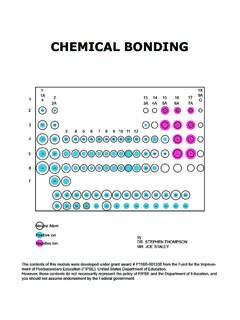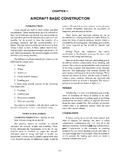Transcription of Direct Bonding of Standard (Yellow) CSST
1 Direct Bonding of Standard (Yellow) CSST Direct Bonding is required for gas piping systems incorporating Standard (yellow) or uncoated CSST whether or not the connected gas equipment is electrically powered. This requirement is provided as part of the manufacturer's instruction for single-family and multi-family buildings and required by the 2009 and later editions of the National Fuel Gas Code, the International Fuel Gas Code and the Uniform Plumbing Code. A person knowledgeable in electrical system design, the local electrical code and these requirements should specify the Bonding for commercial applications. Standard CSST installed inside or attached to a building or structure shall be electrically continuous and Direct -bonded to the electrical ground system of the premises in which it is installed. The gas piping system shall be considered to be Direct -bonded when installed in accordance with the following: The Bonding conductor is permanently and directly connected to the electrical service equipment enclosure, the grounded conductor at the electrical service, the grounding electrode conductor, or to one or more of the grounding electrodes used.
2 When an additional grounding electrode(s) is used for the gas service, it shall be bonded to the electrical service grounding electrode system or, where provided, the lightning protection grounding system. For single and multi-family structures a single bond connection shall be made on an accessible rigid piping component or CSST fitting located downstream of the utility gas meter or second-stage LP regulator. The Bonding clamp attachment point may be at any location within the gas piping system. However, the shortest practical Bonding wire length will improve the effectiveness of the Direct -bond. The corrugated stainless steel tubing portion of the gas piping system shall not be used as the point of attachment of the Bonding clamp under any circumstances. (Fig. 1, 2) The Bonding conductor shall be no smaller than a 6 AWG copper wire or equivalent.
3 The Bonding conductor shall be installed and protected in accordance with the National Electrical Code, NFPA 70, (NEC) and Canadian Electrical Code (CEC). Bonding /grounding clamps shall be installed in accordance with its listing per UL 467 and shall make metal -to- metal contact with a rigid pipe component or CSST fitting. This Direct -bond is in addition to any other Bonding requirements as specified by local codes for ground fault protection. The 2015 edition of the National Fuel Gas Code, International Fuel Gas Code, and Uniform Plumbing Code limits the length of the Bonding conductor to 75-ft. When there are no local code requirements for the length of this conductor refer to the manufactures instructions or the NEC / CEC for guidance regarding the permissible length of the Bonding conductor. Figure 1: Bonding Clamp Attachment to Pipe Figure. 2: Bonding Clamp on CSST Fitting Black Pipe Component or Gastite Stub-Out Manufactures of black jacketed CSST products which have been tested and listed to ICC-ES LC 1024, CSST Utilizing a Protective Jacket , may not require or include in their instructions the additional Direct - Bonding step that is required with Standard (yellow) CSST products.
4 However local codes may be more restrictive and may differ from manufacturer s requirements. Local codes take precedence and must be adhered to. Bonding WIRE Bonding CLAMP CSST FTG. FTGFTGFTGFITTIBONDING WIRE Bonding CLAMP *PIPE NIPPLE *Pipe components must be made from steel, galvanized steel, black iron, copper and/or brass. Rev. 071114

